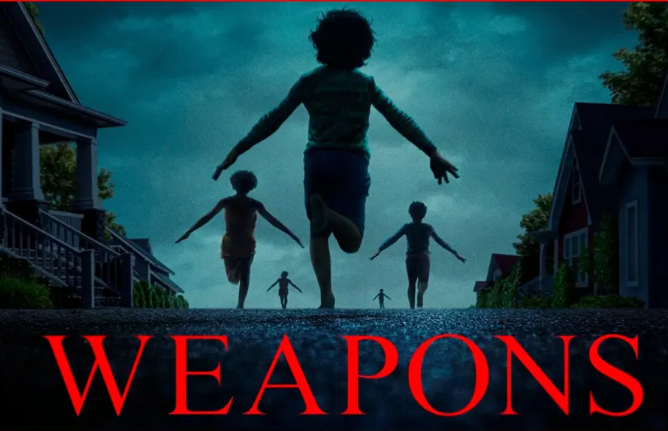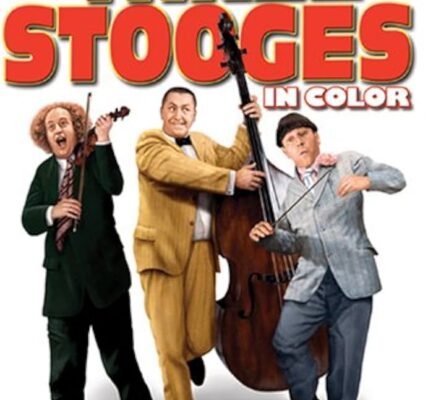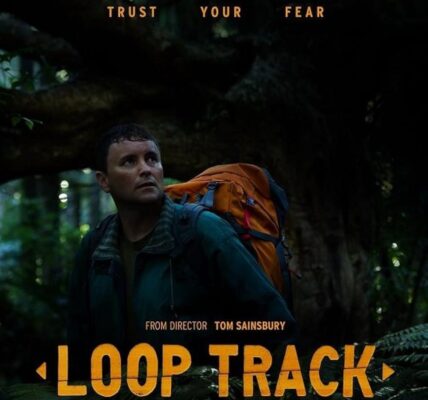1. Plot Summary
In the quiet town of Maybrook, Pennsylvania, a horrifying event unites a community in confusion and fear: seventeen children from the same third-grade class vanish on the same night, all leaving their homes at exactly 2:17 a.m. with their arms outstretched like they’re flying. Only one child, Alex Lilly, remains behind.
As suspicion and paranoia settle on the missing-children case, attention falls on Justine Gandy, the teacher of the class, who is vilified by parents and townsfolk alike. Meanwhile, Archer Graff (father of one of the missing children) pushes for answers, Marcus (the school principal), Paul (a police officer), James (a troubled individual), and Gladys (Alex’s reclusive great-aunt) each end up playing key roles in the unfolding mystery.
Over multiple narrative threads, the film gradually reveals that Gladys is a dying witch who has orchestrated the disappearances via dark rituals. She had been collecting personal items and hair locks of each child, combining them via an occult method to “weaponize” the children into instruments of her will. Alex, intentionally spared, is tied into the ritual’s mechanics.
In the film’s climax, Justine, Archer, and Alex confront Gladys in her home’s basement, free the enchanted children, and a vicious showdown ensues. Gladys meets a grisly end, and the spell is broken. Alex moves away to live with another relative, and some of the affected children gradually regain their voices.
2. Notable Elements
What stands out / what is done well
- Nonlinear, multi-perspective storytelling: The film is divided into chapters from different characters’ viewpoints, gradually interlocking their stories. This structure is used not as a gimmick but to build tension, reframe events, and evoke suspicion.
- Julia Garner’s portrayal of Justine: Her performance is often cited as central. She portrays a woman gradually unraveling under suspicion, grief, and isolation.
- Amy Madigan as Gladys: Gladys becomes a kind of monstrous central figure. Madigan’s performance—paired with striking makeup design—elevates the film’s horror elements.
- Atmosphere, cinematography & editing: Cinematographer Larkin Seiple and editor Joe Murphy are praised for giving the film a visceral visual language—camera movements that land the audience in the action, framing that emphasizes disorientation, and editing choices that amplify dread.
- Pacing of reveal / dread: The film’s slow build, withholding of information, and gradual reveal of ritualistic horror are often seen as strengths. The film doesn’t rush explanations, and lets the horror seep in.
What less successful / criticisms
- Heavy exposition toward the end: Some critics feel that the film’s back half leans too much on exposition to explain every piece, reducing earlier ambiguity.
- Thematic clarity & metaphor complications: The witch metaphor sometimes feels heavy-handed or insufficiently connected to the seemingly real horror elements. For example, Alex’s role as both victim and participant is unsettling but raises interpretive tension that some find unresolved.
- Deriving horror from negative stereotypes: Some reviewers argue the film demonizes elderly women (as witches) in a way that feels problematic, turning otherness into terror.
- Credibility stretches: Some plot turns (who knows what, when rituals succeed, how children are controlled) may stretch belief.
3. Themes and Messages
- Loss of innocence / corruption of childhood: The disappearance of children, the stripping away of their individuality to become “weapons,” echoes a horror of corrupted innocence.
- Guilt, complicity & agency: The idea that the missing children are controlled to act violently raises questions about moral responsibility—are they victims, instruments, or both?
- Grief, blame & scapegoating: The community looks for someone to blame (Justine), revealing how grief can twist into suspicion and social paranoia.
- Secrets, lineage & dark memory: The hidden past, the witch aunt, the gathering of personal items — these all point to how family legacies can carry malignant force.
- Ritual, power, and metaphor of violence: The ritual formula (hair, personal items, blood) mediates between metaphor and literal horror—how small tokens can bind identity, power, and consequence.
While Weapons is not a film that connects to holiday or sentimental traditions, its focus on memory, trauma, community, and confronting hidden darkness resonates with the introspective moments people sometimes have during holidays or in familial reflection.
4. Personal Impressions
Strengths I appreciated:
- I admire its ambition. Weapons doesn’t play safe; it combines supernatural horror, mystery, domestic drama, and multiple POVs.
- The performances stand out — especially Garner and Madigan. Their tension and emotional weight ground the supernatural elements.
- The ritual concept is creative and unsettling. The idea of people being repurposed as instruments—or “weapons”—is chilling and original.
- The slow reveal works: the film teases pieces, and tension builds rather than descending into constant shock.
What I felt was weaker:
- The exposition needed to tie everything together sometimes pulled me out of the mood—the explanations are heavy and dense.
- Some character arcs or motivations feel underexplored. Secondary characters (James, Marcus) get less emotional density.
- The metaphor-to-literal transition is rough: at times the horror feels allegorical, then suddenly very concrete, which can jar tone.
- The ending is grand and dramatic, but for some, it may not deliver fully on all thematic ambiguities raised earlier.
5. Audience Recommendations
You’ll likely enjoy Weapons if you:
- Like horror that mixes mystery, ritual, and philosophical or metaphorical elements.
- Appreciate ensemble storytelling and nonlinear narratives.
- Don’t require every twist to be airtight—are open to ambiguity and interpretive space.
- Enjoy strong acting and atmospheric horror more than cheap jump scares.
You might be less pleased if you:
- Prefer horror that is more straightforward and strictly logical.
- Dislike supernatural or occult elements as metaphors that lean into abstraction.
- Need every character fully fleshed rather than many POVs with varying depth.
6. Conclusion & Rating
Weapons (2025) is a bold, unsettling, and ambitious horror mystery. Its strengths lie in the performances, the atmospheric visuals, and a ritual horror core that feels fresh in many moments. Its weaknesses—heavy explanation, tonal shifts, and stretches of plausibility—do not completely derail it. For fans of horror that provokes thought as well as dread, it offers a vivid, haunting experience.
Final Recommendation: Definitely worth watching, especially if you enjoy horror with depth and mystery.
⭐ Rating: 4 / 5
Watch more:



